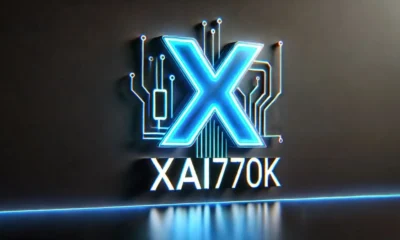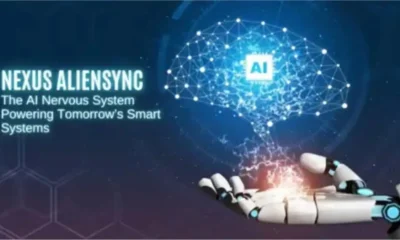AI
How Businesses Can Use AI Video Editors to Boost Marketing and Ads
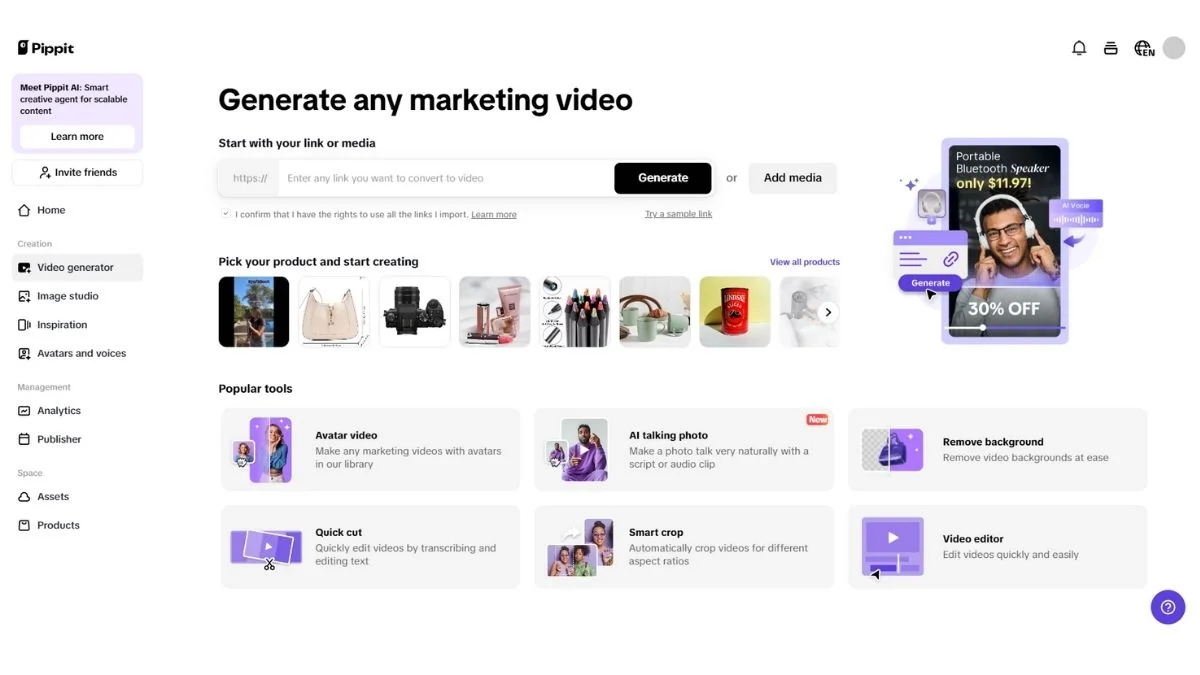
Video marketing isn’t just an option anymore—it’s a necessity. With social media platforms prioritizing video content and audiences engaging more with visuals, businesses must step up their game. However, traditional video editing can be expensive, time-consuming, and require professional expertise. This is where an AI video editor steps in, offering a smart, automated approach to creating high-quality videos in minutes.
The Business Benefits of AI Video Editing
AI video editing is transforming the way businesses create content, making the process faster, more affordable, and highly efficient. By automating key editing tasks, AI tools allow brands to maintain consistency, optimize engagement, and maximize their return on investment. Here’s how AI video editing benefits businesses:
1. Efficiency & Speed
Time is money, and AI video editors significantly cut down the time needed to produce high-quality videos. Traditional editing can take hours—or even days—while AI tools can generate polished content in minutes. Automated scene transitions, smart trimming, and auto-generated captions remove the need for manual editing, allowing businesses to focus on content creation rather than tedious post-production.
2. Cost Savings
Hiring a professional video editor or subscribing to high-end editing software can be costly. AI video editors provide an affordable alternative, reducing the need for a dedicated team while delivering professional results. Many AI tools also offer free versions with powerful features, making it easier for small businesses and startups to compete with larger brands.
3. Brand Consistency
AI-generated templates ensure brand consistency across all marketing materials. Businesses can maintain uniform styles, fonts, colors, and transitions in their videos, reinforcing their brand identity across multiple platforms. This is especially important for companies that frequently post on social media or run ad campaigns across different channels.
4. Increased Engagement
AI video editors optimize content for maximum engagement by applying smart enhancements like dynamic transitions, auto-subtitles, and background music. Videos created using AI are designed to keep viewers hooked, increasing watch time and boosting conversion rates.
AI Video Editors in Action: Real-World Business Use Cases
AI video editing isn’t just a futuristic concept—it’s actively transforming the way businesses create and distribute video content. From marketing campaigns to customer engagement, here’s how businesses are leveraging AI video editors in practical scenarios:
1. Instant Ad Creation
Businesses can quickly create professional advertisements using AI-generated templates. Instead of starting from scratch, AI tools analyze content needs and generate high-quality promotional videos in minutes.
2. Social Media Optimization
AI video editors can automatically format videos for different platforms, ensuring that content fits Instagram, TikTok, YouTube, and other social media channels without extra effort. For example, using a video resizer ensures that your Instagram content is perfectly optimized.

3. Customer Testimonials & Reviews
Video testimonials build trust and credibility. AI-powered tools enhance customer testimonials by improving audio quality, adding captions, and creating smooth transitions, making them more appealing to potential customers.
4. Educational Content & Webinars
AI-generated captions and voiceovers help businesses create professional webinars, training videos, and tutorials with ease. Automated tools ensure clarity and accessibility, making educational content more engaging.
5. Personalized Video Campaigns
AI tools can analyze audience data and generate personalized video campaigns tailored to different customer segments. Businesses can create dynamic, data-driven video ads that resonate with their target audience, improving engagement and conversion rates.
Inside an AI Video Editor: How It Works
AI video editors rely on machine learning and automation to simplify video creation. Here’s a closer look at their core functionalities:

- AI Scene Detection: Automatically detects and trims unnecessary footage, creating seamless transitions for a polished final product.
- Voice & Text AI Integration: Generates automated voiceovers and captions, making videos accessible and engaging.
- Automated Effects & Enhancements: Adds smart filters, animations, and background music with a single click, giving videos a professional touch.
- Smart Recommendations: AI tools analyze video content and suggest improvements, optimizing the final output for maximum impact.
Step-by-Step Guide: How to Use AI Video Editors for Marketing
AI video editors simplify the marketing process by automating key editing tasks, making content creation faster and more effective. Pippit takes this a step further by offering powerful AI-driven tools for seamless editing, branding, and optimization. Here’s how you can use AI video editors to enhance your marketing strategy:
1. Select a Template
Start by uploading your video clips or choosing from AI-generated templates. Pippit analyzes your content and suggests the best structure, ensuring a professional look without the need for extensive editing skills.

2. Customize with AI Tools
Make your video stand out by adjusting branding elements, adding text overlays, and using AI-generated voiceovers. Pippit enhances your content with dynamic transitions, music, and smart effects to boost engagement.
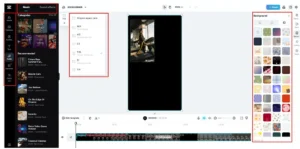
3. Optimize & Export
SEO optimization is key to reaching the right audience. AI-powered tools in Pippit suggest high-ranking video titles, descriptions, and tags. Once finalized, export your video in multiple formats optimized for YouTube, Instagram, and other platforms.

4. Distribute & Analyze Performance
After publishing your video, track its success with AI-driven insights. Pippit provides data on viewer engagement, watch time, and interaction rates, helping you refine your strategy and improve future content.
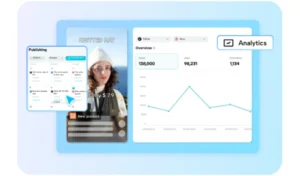
AI Video Editing Tools: Choosing the Right Fit for Your Business
With so many AI video editors available, choosing the right one depends on your business needs. Here’s what to consider:
- Feature Set: Does it include templates, voiceovers, auto-subtitles, and advanced editing tools?
- Ease of Use: Is it beginner-friendly, or does it require technical expertise?
- Cost: Does it offer free features, or is a premium subscription required?
- Platform Compatibility: Can you export videos in multiple formats for different platforms?
Some AI video editors are better suited for quick social media videos, while others offer advanced editing tools for professional content creation. Businesses should experiment with different tools to find the best fit.
The Future of AI Video Editing in Business Marketing
AI video editing is evolving rapidly, and businesses that adopt this technology early will have a competitive edge. Here’s what the future holds:
- Hyper-Personalization: AI tools will create tailored video content for individual viewers based on their interests and behaviors.
- Automated Interactive Videos: AI will enable clickable elements within videos, enhancing user engagement.
- Voice & Language Adaptation: Advanced AI will generate voiceovers in multiple languages, allowing businesses to reach global audiences effortlessly.
- Predictive Analytics for Video Success: AI will analyze data trends and suggest content strategies to maximize engagement.
As AI continues to improve, video marketing will become more accessible, efficient, and powerful, allowing businesses of all sizes to create high-quality content without technical barriers.
Final Thoughts: Making AI Video Editing Work for Your Brand
AI video editors have transformed the way businesses approach video marketing. Whether you’re creating ads, educational content, or social media posts, AI-powered tools make the process faster, more affordable, and highly effective. By leveraging AI, businesses can scale their video marketing strategies, maintain brand consistency, and engage audiences effortlessly. The future of marketing belongs to brands that embrace automation, and AI video editors are the key to staying ahead in an increasingly digital world.
-

 BIOGRAPHY7 months ago
BIOGRAPHY7 months agoBehind the Scenes with Sandra Orlow: An Exclusive Interview
-

 HOME1 year ago
HOME1 year agoDiscovering Insights: A Deep Dive into the //vital-mag.net blog
-

 HOME1 year ago
HOME1 year agoSifangds in Action: Real-Life Applications and Success Stories
-

 BIOGRAPHY1 year ago
BIOGRAPHY1 year agoThe Woman Behind the Comedian: Meet Andrew Santino Wife







